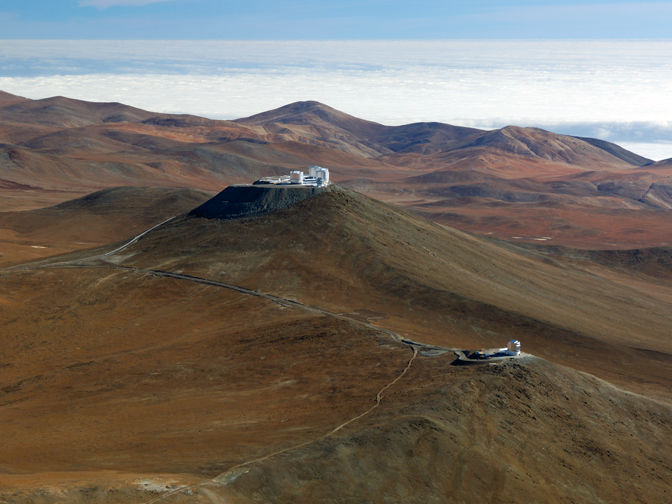

ECMWF weather forecasts help one of the world’s top astronomical organisations, the European Southern Observatory (ESO), to fine-tune its telescopes in the quest to explore the outer reaches of the universe, writes ESO’s Marc Sarazin.
These are exciting times for astronomy as modern technology enables us to study objects at the edge of the observable universe and to detect planets orbiting other stars.
To do this, ESO operates three world-class observing sites in the Atacama Desert in northern Chile: La Silla, Paranal and Chajnantor. In this remote region, the sky is clear more than 300 nights a year and light pollution is minimal. And now ESO is building the 39-metre European Extremely Large Telescope (E-ELT), which will become ‘the world’s biggest eye on the sky’.
The Very Large Telescope (VLT) at Cerro Paranal is ESO's current premier observatory for observations in visible and infrared light. It is made up of four telescopes, each 8.2 metres in diameter, which operate individually using a diverse range of instruments.
Weather conditions are generally favourable for the operation of the VLT. The cold Humboldt Current in the ocean 14 km to the west maintains a temperature inversion well below the observatory, which ensures cloudless skies most of the year.

Shortly after sunset, the Very Large Telescope system gets prepared for its starry quest. During daytime, the huge telescope structures are cooled to the air temperature forecast by ECMWF. The people who can be seen on the left provide a sense of scale. Photo: ESO/B. Tafreshi (twanight.org)
But the observatory’s optimum performance depends on more than just clear skies. Temperature and wind also have a bearing on the correct functioning of the facility.
Temperature forecasts
Astronomical objects can appear blurred as a result of variations in the refractive index of air, which are in turn caused by variations in temperature. It is therefore important to minimise differences between air temperature inside the telescope enclosure and outside it.
To achieve this, the VLT is actively thermally controlled during daytime. Air conditioning brings the inner volume of the enclosure to the target temperature estimated from ECMWF forecasts for the time at which the enclosure is due to open.
Wind profiles
Turbulence in the Earth’s atmosphere distorts images obtained even at the world’s best sites for astronomy, including at Paranal. To minimise this atmospheric blurring effect, astronomers have turned to a method called adaptive optics.

ECMWF’s forecast of wind speed at different pressure levels above the Paranal observatory (743 hPa) for the week starting on 30 March 2015. The information is used to predict times of slow moving turbulence, which is easier to correct for by adaptive optics techniques.
Sophisticated, deformable mirrors controlled by computers can make adjustments hundreds or even thousands of times a second to correct for the distortion caused by turbulence in the Earth's atmosphere. This makes the images obtained almost as sharp as those taken from space, and it allows the optical system to observe finer details of much fainter astronomical objects than would otherwise be possible from the ground.
However, this technique performs well only if the turbulence does not move faster than the adaptive optics control loop. As the turbulence is carried by the wind, a forecast of the vertical wind profile above the observatory gives precious advance information about the expected efficiency of the adaptive optics instruments. The forecast can be used to arrange the observing schedule accordingly.
Cooperation since 1998
ECMWF has supported astronomical research at ESO by providing meteorological products for its observatories in northern Chile since 1998. Thanks to a recent decision by its Council, ECMWF is now able to provide products from the Boundary Conditions Programme to research projects and international organisations.
ESO is the first international organisation to benefit from this decision and it is now receiving hourly forecasts four times a day.
For more information on ESO, visit the European Southern Observatory’s website.
About the author: Marc Sarazin is an Applied Physicist at the European Southern Observatory.
Top photo: ESO/G.Hüdepohl (atacamaphoto.com)
